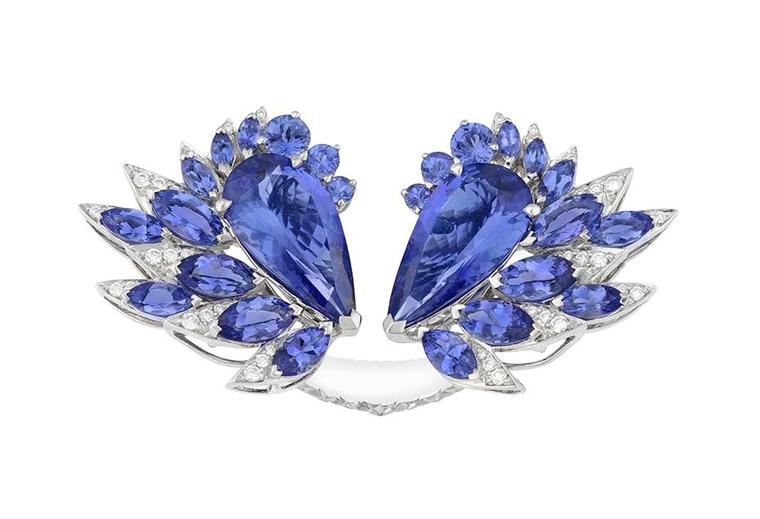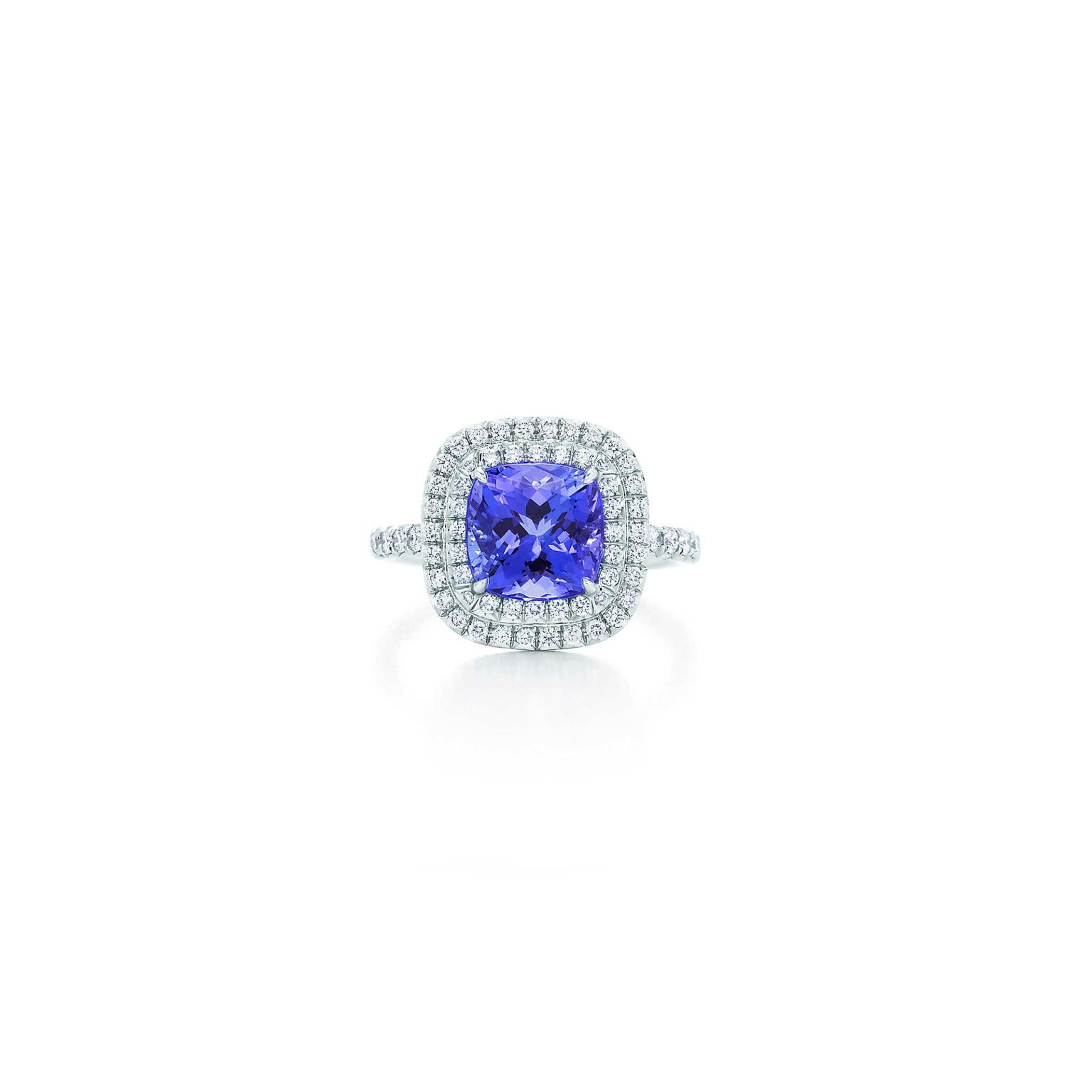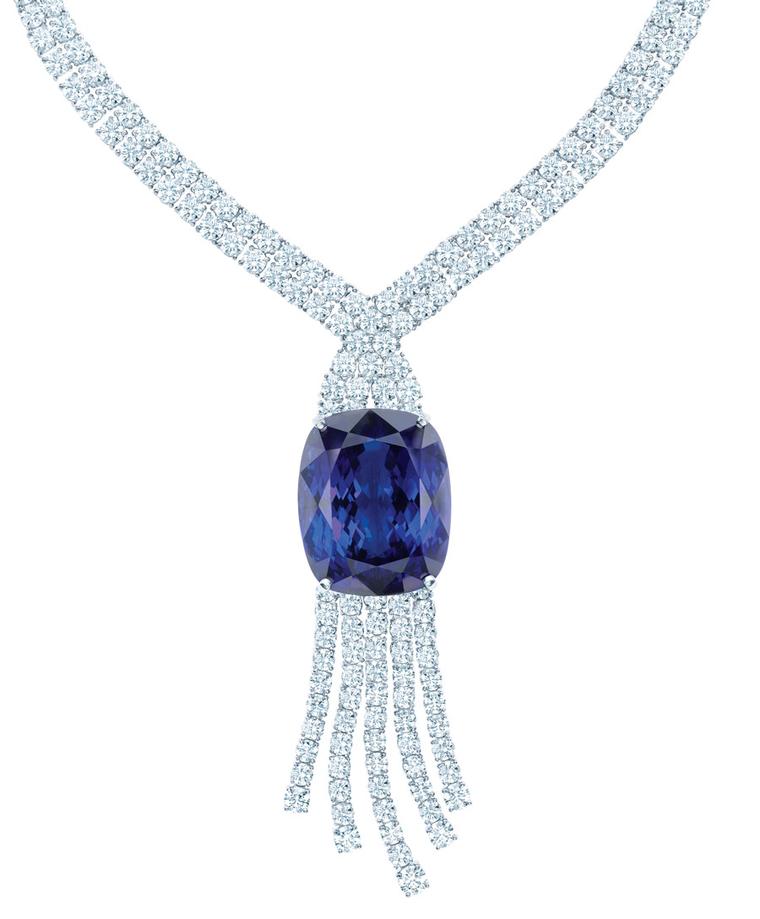
By Rachael Taylor
Tanzanite was discovered just 50 years ago, precluding it from the usual gemmological folklore, such as protecting its owner from evil like topaz, or warding-off drunkenness like amethyst. But that's not to say it doesn't have its own magical properties. Tanzanites can change colour, after all, but they may soon venture into the realm of myth as the single source of these shape-shifting gems nears depletion.
If legend is to be believed, tanzanite was discovered in the Merelani Hills of Tanzania by a Masai tribesman in 1967. He allegedly stumbled across a crop of what he believed to be blue sapphire sticking out of the ground. Once unearthed by the hordes of fortune hunters that descended not long after, it proved to be something entirely unique: a coloured gemstone that radiated blue, violet and burgundy, depending on which angle it was viewed from - a natural phenomenon known as trichroic.
Discover more tanzanite jewellery designs here
Tanzanite was made famous by Tiffany & Co., which actually gave it the name tanzanite after signing up as its main distributor. It launched an arresting marketing campaign, lauding it as "the loveliest blue gemstone discovered in more than 2,000 years". With such an influential backer, the gem was an overnight sensation.
Unusually for a gemstone, tanzanites are only found in one location, and the Merelani Hills will be completely depleted within 30 years, according to an independent report created for the London Stock Exchange in 2013. Linda Kennedy, a gemmologist at Richland Resources, which previously owned mining company TanzaniteOne, agrees with this prognosis. "The chance of the natural factors that originally occurred to conceive tanzanite ever happening again are less than a million to one - it's like winning a geological lottery," says Kennedy, explaining why it is unlikely an alternative source will ever be discovered.
Tanzanites are already promoted as 1,000 times more rare than diamonds, and any credible threat to the lifespan of their supply is a starting klaxon for serious fine jewellery collectors. "The exclusivity of the precious stone makes it attractive to buyers," says designer Fei Liu, who has noted an increase in demand for tanzanite jewellery from private clients. "The longevity of tanzanite being openly available on the market could change at any moment, which makes the stone a perfect investment."
And there are plenty of new tanzanite jewellery designs emerging this year to make especially attractive investments. A preview of a new necklace in the Temptations collection of Chopard jewellery for 2015 reveals a floral necklace set with tanzanite, while a tanzanite ring from Wallace Chan is set with a "calm and mysterious" 22.28ct tanzanite in a new oceanic ring named The Tempest.
Mikimoto has tapped into an emerging trend within tanzanite for beads and polished pebbles with its new collection Hyacinthia. Perfectly smooth yet organically shaped drops, referred to as tumbled tanzanite, complement the wild beauty of 22mm baroque South Sea pearls in a striking Mikimoto necklace and earring set.
Tomasz Donocik has set tanzanites alongside topaz, iolite, sapphire and amethyst to create a graduation effect in his new Electric Night collection, and is also working on a private commission starring tanzanite. For him, the coloured gemstone really does have the power to enchant, in spite of its uncommonly modern discovery. "Tanzanite is like a pool of ink that changes its hues and tones as you move the stone around," he says. "It certainly has a magical attraction."
Discover the new Tomasz Donocik Electric Night collection here






















